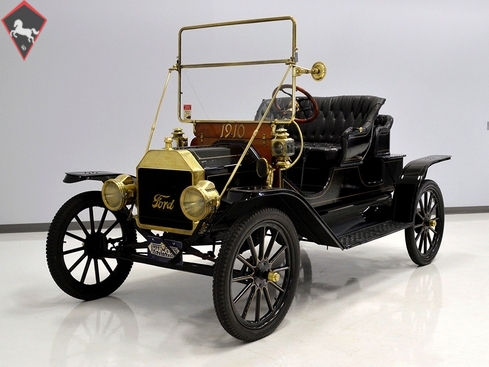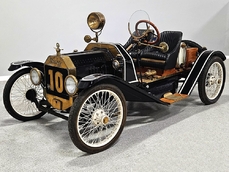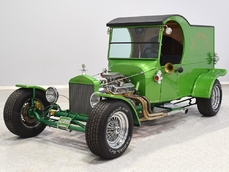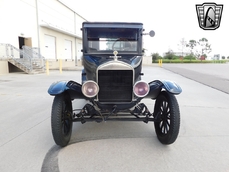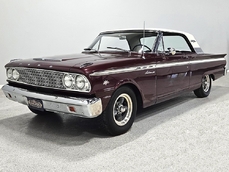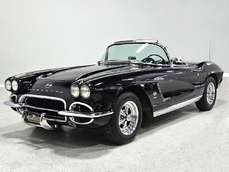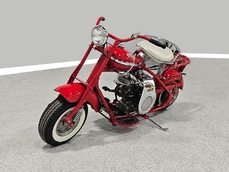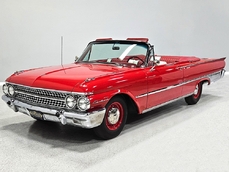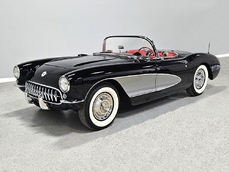Ford Model T 177 cubic inch inline-4 1910
General description :
Model Ts are a special part of the American landscape. They were obviously quite popular when they were new, offering mobility to the American people that was virtually unknown before their arrival. They were some of the first cars to be treated as collectables, often showing up as special-use-only machines as early as the 1930s. And today, people around the world still recognize Henry Ford’s Tin Lizzie and it still resonates as an integral part of modern automotive lore.
But did you realize that not all Model Ts are created equal? The remarkable part of the Model T story is the implementation of the assembly line, which happened in 1912 or 1913, depending on who you ask. Prior to that, Model Ts were hand-assembled just like every other car, and while they were still rugged, simple, and affordable machines, they were very different animals than their mass-produced siblings. As a result, these early “pre assembly line” cars are highly sought and extremely desirable machines in their own right, and the contrasts with the later cars are fascinating.
This particular 1910 Model T Runabout comes from long-term ownership in a single family dating back decades. It’s one of those fantastic older restorations that was done in the 1950s when Model T enthusiasm was arguably at its peak and the cars were not only plentiful, but also properly restored and maintained. Showing serial number 19879, it dates to early April 1910, making it a remarkable survivor that is quite faithful to the original intent, skipping the various “upgrades” that many Model T owners would inflict on later cars. The wooden Runabout body is original and in fantastic condition, wearing correct black varnish with ornate gold pinstripes that make the simple T look far more elegant and sophisticated. The simple fenders, wooden firewall, and upright windshield are all part of the Model T’s charm and on this car they remain in excellent condition. The brass has a soft shine that could be enhanced with some elbow grease or left as-is for a bit of patina that suits the car just fine. The original head lights are intact (although the carbide generator is gone), as are the kerosene-fired cowl lamps and taillight. Various Ford script emblems have been added over the years, a feature I think Henry Ford would appreciate, as well as ‘1910’ numerals front and rear, something that isn’t authentic but will certainly cut down on the number of questions you have to answer at fuel stops. The paint, which is now the better part of five decades old, remains in great condition and the car needs nothing to be shown and enjoyed as it sits.
The black leather upholstery is also quite correct, using diamond-tufted patterns on the surprisingly comfortable front seat as well as the smaller “mother in law” seat in back, which is probably best suited to people you don’t like. The wooden firewall is neatly varnished with a soft glow and the original coil box (full of irreplaceable early coils) is in fantastic condition. Note the brash fittings throughout, including the ignition switch assembly and the spark and throttle levers on the steering column. The thick wooden steering wheel seems surprisingly robust for the delicate-looking T, but it feels great in your hands. You’ll note this car carries an accessory Jones speedometer that works properly today. It shows 2225 miles, but we have no way of authenticating that figure. We suspect that the speedometer was installed during the time of its restoration in the 1950s (note the phillips-head screws, which weren’t invented until 1937), and if that’s the case, we’re more than willing to believe the mileage is since that time. Regardless of the figure, it’s clear that this Model T, like most others, has been reserved for short drives near home, not cross-country treks. The car is set up for a convertible top, but there is no top included (two irons are included and complete tops are readily available).
Early Ts were unique in the mechanical department as well. Yes, it’s the same durable 177 cubic inch inline-4 that powered all the Model Ts, but the earliest cars like this used exposed valve trains, which not only provides a fascinating window into the engine’s operation, but makes genuine early cars easy to spot. We’re assuming that the engine has been rebuilt at some point and it has been recently and extensively serviced so that it runs its very best today. Get the spark and throttle settings right and it fires with a single pull of the crank, a rather remarkable feat that’s always a crowd-pleaser. The engine bay is neatly detailed with new cloth-covered spark plug wires, correct hose clamps, a leather fan belt, and a freshly rebuilt carburetor. There is no water pump, as all early Ts used a thermosiphon system to circulate coolant, and this one shows no propensity to run hot thanks to a new radiator core in the brass shell.
The transmission is also the familiar 2-speed planetary setup used throughout Model T production, and with a little practice, it becomes second-nature and easy to use. The bands are tight and it works as intended, with a gentle whirring sound that will be familiar to any Model T fan. The chassis is as simple as cars can get and everything is finished in basic black. It’s designed to leak, so plan on that, but there’s nothing that needs service or is out of the ordinary in Model T terms. The brakes work as well as they possibly can, the exhaust has a wonderful Model T voice, and it appears to have its original 6-rivet rear axle, a rather rare find all by itself. Original wood spoke wheels remain in great shape, although if you intend to do some touring in this particular Model T, some new tires would not be a bad idea—the fronts are newer but the rears are ancient Non-Skids, probably dating to the 1950s restoration.
I’ll admit that I am not a Model T expert, but the two experts who have reviewed this car have said that it is very, very authentic and carries a great many proper parts that ordinarily would have been lost to the sands of time. It’s a wonderfully sporting body style (and rather rare), and for the early Model T enthusiast, it represents a chance to own a high-quality early T that has been out of public circulation for half a century. For the right enthusiast, this is a fantastic find and an window into the past that we seldom experience. Call now!
http://www.harwoodmotors.com/vehicles/inventory_details.php?id=640
1910 Ford Model T 177 cubic inch inline-4 is listed sold on ClassicDigest in Macedonia by for $44900.
Car Facts
Car type : Car Make : Ford Model : Model T Model Version : 177 cubic inch inline-4 Engine size : 0.0 Model Year : 1910 Location : Ohio
Sold
Seller Information
Sold
People who viewed this Ford Model T also viewed similar Ford listed at ClassicDigest
Other cars listed for sale by this dealer
About Ford
Ford, founded in 1902, has arguably changed the history of automotive world more than any other car manufacturer by introducing the first people's car Model T in 1908. They had produced more than 15 million cars by the end of the production in 1927, by which T had become obsolete.Ford launched the first low priced V8 engine powered car in 1932. 1932 V8 was an instant hit with superior handling and performance to many far more expansive cars of the day. No wonder 32 V8 Ford has become such a favourite among hot rodders around the world with 32 Deuce coupe as their icon.
During the war Ford completely shut down civilian vehicle production to dedicate all its resources to the Allied war efforts (1942-45) They used to build B-24 bombers, aircraft engines, jeeps, M-4 tanks, military trucks and Bren-gun carriers and more than 30,000 super-charged Rolls Royce Merlin V-12 engines for Mosquito and Lancaster bombers as well as P-51 Mustang fighters. After the war Ford cars in the USA got bigger and flashier along with their competitors. In the 60's Ford was back in the forefront again when introducing their commercial hit Mustang in 1964. Mustang was so popular the competition had to follow Ford's example and the ponycar phenomenon took over the US. Over the years the ponies grew some muscles until the oil crisis kill finally killed them off.
In the sixties Ford rushed into international motor sports scene with a fury. After unsuccessful Ferrari takeover, when Enzo Ferrari had cut the deal off with Henry Ford II making the latter absolutely boil with fury, Ford turned to Lola in UK to produce a Ferrari beating long distance racer after. The collaboration between Ford and Lola created the mighty Ford GT40 that absolutely beat Ferrari in Le Mans 24 numerous times.
In Europe, Ford introduced some of the most epic race and rally cars of the 60's based on humble family sedans; Cortina GT, Lotus Cortina, Escort Twin Cam, and Escort 1600RS with the iconic Cosworth BDA engines.
Today classic Fords are extremely popular with enthusiasts and a great selection of classic Fords can be found for sale at www.ClassicDigest.com
